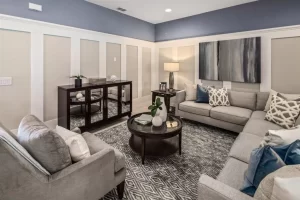It’s not just about spending money on advertising; it’s about ensuring every dollar invested translates into profitable bookings. In this article, we’ll break down what’s considered a good ROAS (Return on Ad Spend) for hotels, analyze current benchmarks, and most importantly, provide you with actionable steps to significantly improve it.
Understanding ROAS in the Hotel Industry
ROAS is a fundamental metric that measures the effectiveness of your advertising spend. You calculate it by dividing the revenue generated by your ad campaigns by the cost of those campaigns. For example, if you spent $1.000 on ads and generated $5.000 in bookings, your ROAS would be 5:1 or 500%.
For hotels, a high ROAS means your ads are attracting guests who book stays, which directly translates into revenue. A low ROAS, on the other hand, indicates you’re spending more than you’re earning, which is unsustainable long-term. It’s crucial to distinguish it from ROI (Return on Investment), which considers all costs associated with an investment, not just advertising. While both are important, ROAS gives us a more direct view of the efficiency of our digital marketing campaigns.
Hotel ROAS Benchmarks: Where Do You Stand?
Determining a “good” ROAS for hotels can be challenging, as it depends on multiple factors like hotel type (boutique, luxury, budget), location, season, and competition. However, based on industry data, we can establish some general guidelines.
A ROAS of 4:1 or 400% is a good starting point for most hotels. This means that for every dollar invested in advertising, you generate 4 dollars in revenue. Some well-optimized hotels in less competitive markets can achieve a ROAS of 6:1 or even 8:1. Conversely, a ROAS below 3:1 should be a red flag and requires an urgent review of your strategy.
It’s important to remember these are just averages. Luxury hotels with higher nightly rates might have a ROAS of 3:1 and still be profitable due to the value of each reservation. Budget hotels, meanwhile, might need a higher ROAS to compensate for narrower profit margins.
Here’s a more detailed breakdown by campaign type:
- Search Campaigns (Google Ads): These typically have the highest ROAS, often between 5:1 and 8:1, as they target users with very high booking intent.
- Display Campaigns: Generally have a lower ROAS, between 2:1 and 4:1, as they focus on visibility and brand awareness rather than direct conversion.
- Social Media Campaigns (Facebook, Instagram Ads): These vary widely, from 2:1 to 5:1, depending on the targeting and ad creativity.
- Metasearch Engines (Google Hotel Ads, Trivago, Kayak): These often have a very competitive ROAS, frequently exceeding 7:1, as they capture users in the final stage of their booking decision.
It’s crucial to monitor your ROAS not just overall, but also by each channel and campaign. This will allow you to identify which strategies are working and where you need to make adjustments.
Key Factors Influencing Hotel ROAS
Several elements directly impact your campaigns’ ROAS. Understanding them will help you optimize your efforts:
- Bidding Strategy: Automated bidding and value-based strategies can be very effective if set up correctly, but they require constant monitoring.
- Ad Quality and Creativity: Relevant, attractive ads with clear calls to action (CTAs) increase click-through rates (CTR) and conversions.
- Landing Page (Hotel Website): A smooth user experience and an optimized booking page are crucial. If your website is slow, confusing, or not mobile-friendly, you’ll drive potential guests away.
- Pricing and Offers: The competitiveness of your rates and the attractiveness of your promotions directly influence booking decisions.
- Online Reputation and Reviews: A hotel with good reviews builds trust and a higher likelihood of conversion.
- Audience Segmentation: Targeting your ads to the most qualified prospects avoids unnecessary spending.
- Competition: In highly competitive markets, achieving a high ROAS can be more challenging without a very well-defined strategy.
Steps to Improve Your Hotel Campaign ROAS
Now that we understand the importance and benchmarks, let’s talk about how you can take concrete steps to boost your ROAS.
1. Optimize Your Website and Booking Engine
This is, by far, one of the most critical steps. A slow, outdated, or non-responsive website is a black hole for your advertising investment.
- Load Speed: Use tools like Google PageSpeed Insights to identify and resolve speed issues. Every second counts.
- Responsive Design: Ensure your site looks and functions perfectly on all devices (mobiles, tablets, desktops). Most bookings start on mobile.
- User Experience (UX): Navigation should be intuitive. Guests need to easily find information about rooms, services, and most importantly, the booking button.
- Integrated and Simplified Booking Engine: Reduce the steps needed to complete a booking. Eliminate friction, offer multiple payment options, and ensure the process is secure.
- High-Quality Images and Videos: Showcase your hotel in the best possible light. Professional photos and virtual tours increase trust and desire.
2. Refine Your Audience Segmentation
Targeting the right audience is key to a high ROAS.
- Demographic and Psychographic Data: Use data from your current guests to create detailed “buyer personas.” Who are your ideal customers?
- Smart Retargeting: Show personalized ads to users who have already visited your website but didn’t book. Offer them a special incentive to return and complete the booking.
- Lookalike Audiences: Based on your existing customers, these audiences allow you to find new prospects with similar characteristics.
- Geographic and Language Segmentation: Tailor your campaigns to the location and language of your potential guests.
3. Perfect Your Ads and Keywords
The relevance of your ads is directly proportional to your ROAS.
- Long-Tail Keywords: Instead of “hotel in [city],” consider “boutique hotel with pool in [city]” or “hotel near [city] airport with shuttle.” These are less competitive and have higher booking intent.
- Relevant Ad Copy: Make sure your ads are concise, appealing, and contain your main value propositions (e.g., breakfast included, free cancellation, ocean view).
- Use Ad Extensions: Leverage location extensions, sitelink extensions, call extensions, and price extensions to provide more information and improve visibility.
- Constant A/B Testing: Experiment with different headlines, descriptions, images, and calls to action to see what resonates best with your audience.
4. Optimize Your Bidding Strategies
An efficient bidding strategy can make a huge difference.
- Conversion-Based Bidding: Use automated bidding strategies like “Maximize conversions” or “Target ROAS” in Google Ads, which automatically optimize bids to achieve your goals.
- Bid Adjustments by Device, Location, and Time of Day: Increase your bids when and where users are most likely to book.
- Consider Customer Lifetime Value (LTV): Don’t limit yourself to the first booking. If you know a recurring customer is highly valuable, you can afford a slightly lower ROAS for their initial acquisition.
5. Leverage Metasearch Engines
Metasearch engines are an invaluable source of direct bookings.
- Google Hotel Ads: This is indispensable. Ensure your hotel appears with competitive prices and accurate availability.
- Trivago, Kayak, TripAdvisor: Participate in major metasearch engines and actively manage your rates and availability to remain competitive.
- Connect Your Direct Booking Engine: Ensure links to your website are optimized in metasearch engines to drive traffic directly to you, not to OTAs.
6. Actively Manage Your Online Reputation
Positive reviews are a magnet for new bookings.
- Encourage Guests to Leave Reviews: Provide gentle, simple reminders.
- Respond to All Reviews: Both positive and negative. Show that you care about your guests and are committed to improvement.
- Monitor Key Platforms: Pay attention to Google My Business, TripAdvisor, Booking.com, Expedia, and other relevant platforms.
7. Integrate with a CRM and Data Analysis
A comprehensive view of your data is fundamental for informed decision-making.
- Hotel CRM: A customer relationship management system allows you to track guest interactions, preferences, and booking history.
- Google Analytics and Google Ads: Properly set up conversion tracking to get a clear picture of which campaigns are generating bookings and at what cost.
- Detailed Reports: Periodically analyze your data to identify trends, opportunities, and areas for improvement. Understanding the path your guests take from the initial click to the reservation is invaluable.
A good ROAS in hotel campaigns isn’t a luxury; it’s a necessity. By optimizing your website, refining your segmentation, perfecting your ads, managing your bids, leveraging metasearch engines, and nurturing your online reputation, you can transform your advertising campaigns from mere expenses into profitable growth engines.
Remember that ROAS optimization is an ongoing process. It requires constant monitoring, testing, and adjustments. But with the right strategy and a focused approach, you’ll see your hotel not only attract more attention but convert that attention into profitable bookings.
Contact us at Digisap, and let’s design together an SEO and digital marketing strategy so your hotel is the first choice, and guests book with you, not the competition.
Click here to schedule your free consultation and take your hotel to the next level





